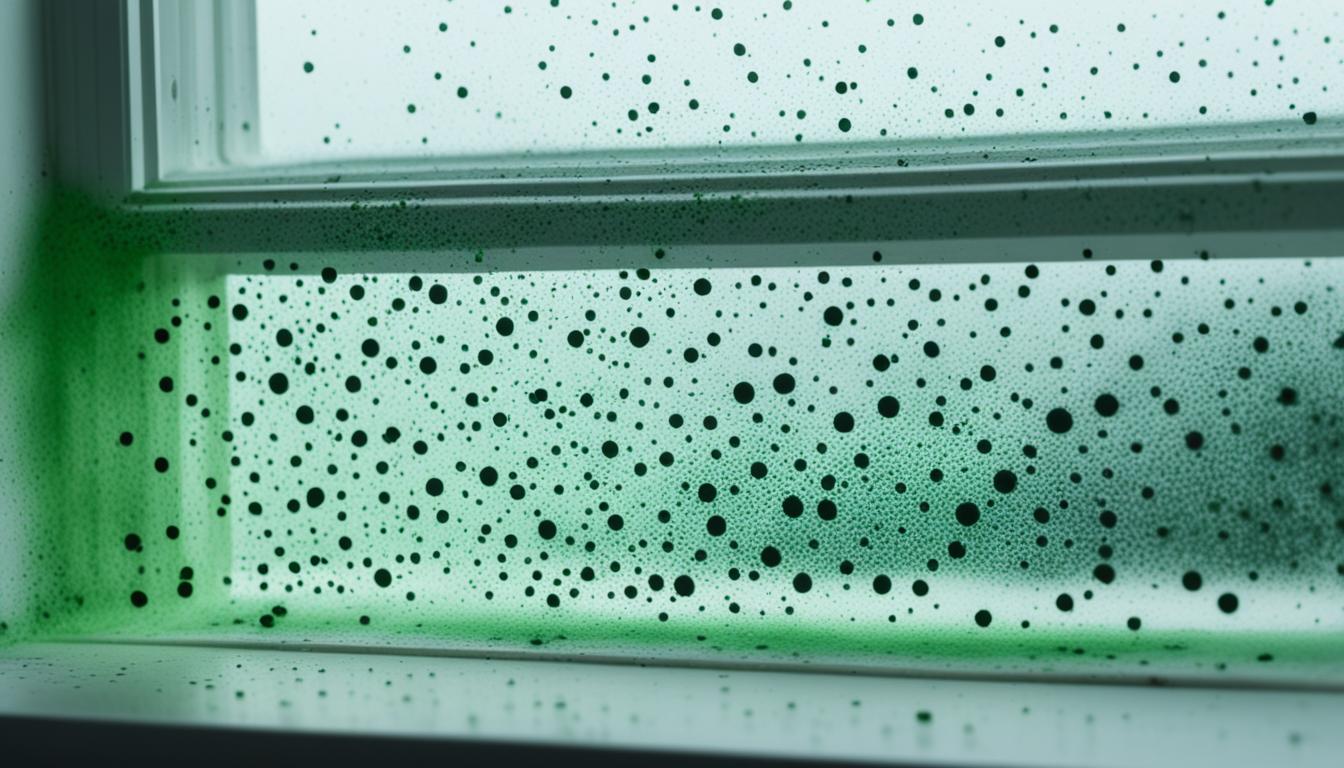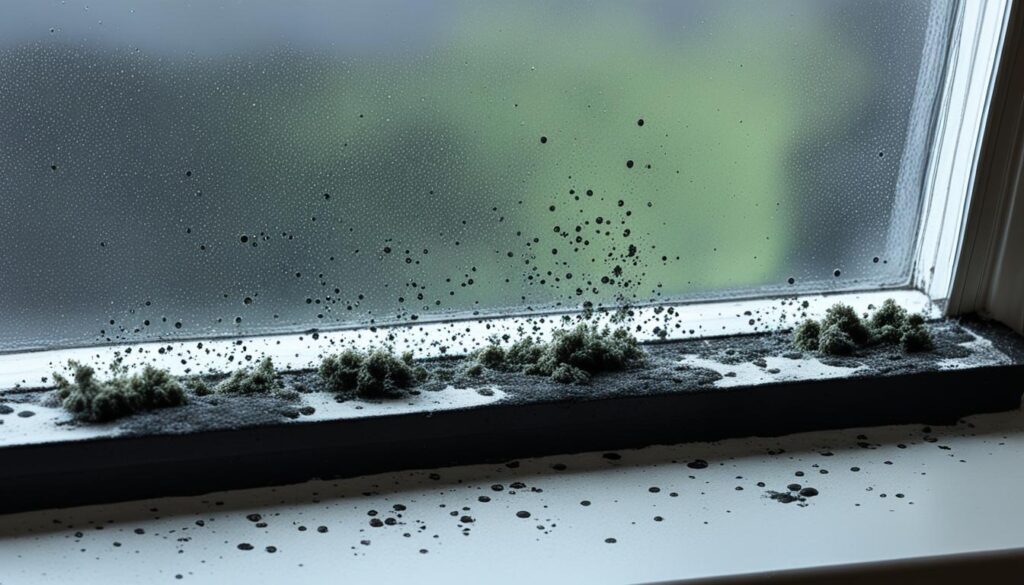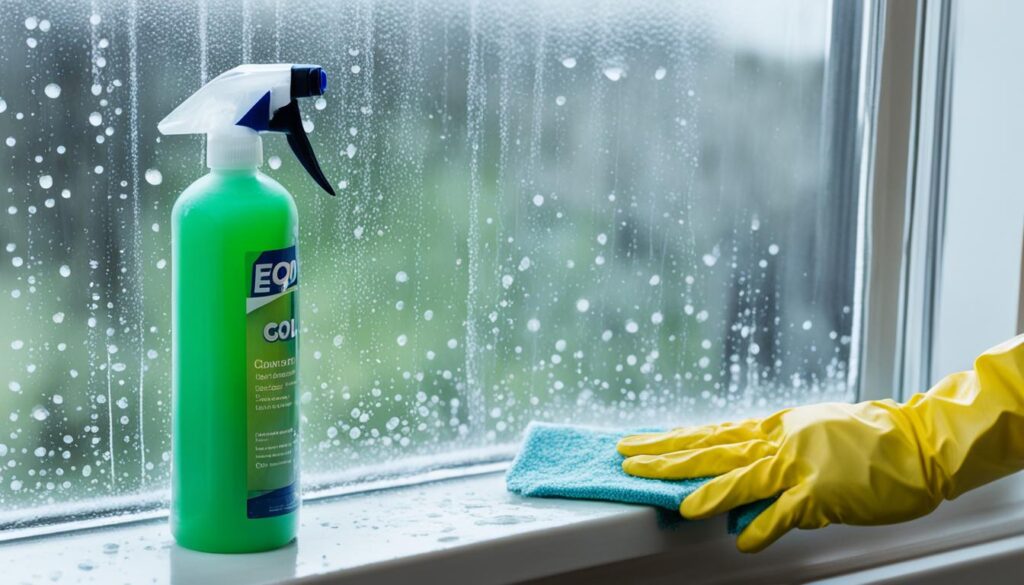
Mold in Air Vents: Risks and Removal Tips
Welcome to our comprehensive guide on mold growth in air vents. In this article, we will focus on the specific issue of mold on window sills and provide valuable insights into the risks involved and effective removal tips. Understanding the dangers associated with mold on window sills is crucial to maintaining a healthy indoor environment for you and your family.
Key Takeaways:
- Mold growth on window sills can pose serious risks to both your health and the integrity of your home.
- It is essential to be aware of the potential health risks associated with mold on window sills, such as respiratory issues and allergies.
- Removing mold from window sills promptly is crucial to prevent its spread and maintain good indoor air quality.
- Regularly cleaning and maintaining window sills can help prevent mold growth in the first place.
- If you encounter a severe mold infestation on window sills, it is highly recommended to seek professional assistance for remediation.
Understanding the Dangers of Mold on Window Sills
Mold growth on window sills can pose significant dangers and health risks to both the inhabitants and the indoor environment. In this section, we will delve into the potential hazards associated with mold on window sills and its implications for indoor air quality and overall well-being.
Impact on Indoor Air Quality:
Mold on window sills releases spores into the air, which can be easily inhaled by occupants. These spores can trigger allergic reactions, respiratory issues, and worsen existing conditions such as asthma or allergies. The presence of mold on window sills can compromise the indoor air quality, leading to discomfort and potential health problems.
Health Risks:
Exposure to mold on window sills can cause a range of health issues, particularly for individuals with weakened immune systems, allergies, or respiratory conditions. Common symptoms include coughing, sneezing, wheezing, itchy eyes, nasal congestion, throat irritation, and skin rashes. Prolonged exposure to mold can even lead to more severe health complications.
“The growth of mold on window sills is not to be underestimated. It can have serious implications for people’s health and comfort.” – Dr. Sarah Johnson, Environmental Health Specialist
Importance of Taking Action:
Understanding the dangers of mold on window sills highlights the importance of taking immediate action for mold remediation. By addressing the mold growth promptly, you can safeguard the indoor air quality and protect the physical well-being of everyone in the household.
Reducing the Risks:
To mitigate the dangers posed by mold on window sills, effective mold removal and prevention strategies should be implemented. Regularly cleaning and disinfecting the window sills, ensuring proper ventilation, and minimizing moisture buildup are crucial steps in reducing the risks associated with mold growth.

| Dangers of Mold on Window Sills | Health Risks | Actions |
|---|---|---|
| Compromises indoor air quality | Triggers allergies and respiratory issues | Clean and disinfect regularly |
| Can worsen existing conditions | Coughing, sneezing, wheezing | Ensure proper ventilation |
| May lead to severe health complications | Itchy eyes, nasal congestion, throat irritation | Minimize moisture buildup |
Effective Removal Tips for Mold on Window Sills
To maintain a mold-free home environment, it is essential to effectively remove mold from window sills. By following a few practical tips and strategies, you can not only clean the window sills but also implement preventive measures to minimize the chances of mold recurring.
Cleaning Techniques
When it comes to cleaning mold on window sills, it is important to approach the task with caution. Follow these steps:
Step 1: Start by wearing protective gear such as gloves, an N95 respirator mask, and safety goggles to avoid direct contact with mold spores.
Step 2: Use a mixture of mild detergent and warm water to dampen a clean cloth or sponge.
Step 3: Gently scrub the moldy areas on the window sills, ensuring thorough coverage.
Step 4: Rinse the cloth or sponge frequently to prevent spreading mold spores.
Step 5: After cleaning, use a clean, dry cloth to wipe away any excess moisture.
Recommended Products
In addition to using cleaning techniques, certain products can enhance the effectiveness of mold removal on window sills. Consider the following:
- Mold-specific cleaners: Look for cleaners explicitly designed to remove mold. These products contain ingredients that target mold spores and help prevent further growth.
- Vinegar: The acetic acid present in vinegar is an effective natural cleaner that can kill mold spores. Dilute white vinegar with water in a 1:1 ratio and use it as a cleaning solution.
- Baking soda: Baking soda is known for its natural cleaning properties. Create a paste by mixing baking soda with water, apply it to the moldy areas, and scrub gently before rinsing.
- Hydrogen peroxide: Hydrogen peroxide is an effective disinfectant that can kill mold on window sills. Use a spray bottle to apply 3% hydrogen peroxide directly to the affected areas.
Prevention Strategies
Preventing mold from recurring on window sills is crucial for long-term mold control. Follow these strategies:
- Maintain proper ventilation: Ensure adequate airflow in rooms with window sills. Regularly open windows and use exhaust fans to reduce moisture levels and minimize mold growth.
- Monitor humidity levels: Invest in a hygrometer to monitor and maintain indoor humidity levels below 60%. Use dehumidifiers if necessary to control excessive moisture.
- Regular cleaning: Incorporate window sill cleaning into your routine cleaning tasks to remove any dust, dirt, or potential mold spores.
- Address water leaks promptly: Immediately fix any leaks or water damage around the window sills. Moisture accumulation provides an ideal environment for mold growth.
By implementing these mold removal tips, performing regular cleaning, and taking preventive measures, you can effectively control mold growth on window sills, ensuring a healthier living space for you and your family.

Conclusion
Addressing mold growth on window sills is crucial for maintaining a healthy indoor environment. Throughout this article, we explored the risks associated with mold on window sills and provided effective removal tips. By taking prompt action, you can protect indoor air quality and the well-being of occupants.
Remember, mold growth on window sills can significantly impact the air you breathe. It can trigger allergic reactions, respiratory issues, and even worsen existing health conditions. Thus, it’s essential to prioritize mold remediation to ensure a safe living space.
If you’re facing significant mold-related challenges, it’s advisable to seek professional assistance. Companies like Fix Mold Miami have the expertise and tools to conduct mold assessments and provide remediation services tailored to your needs. Don’t hesitate to reach out to them for reliable assistance.




